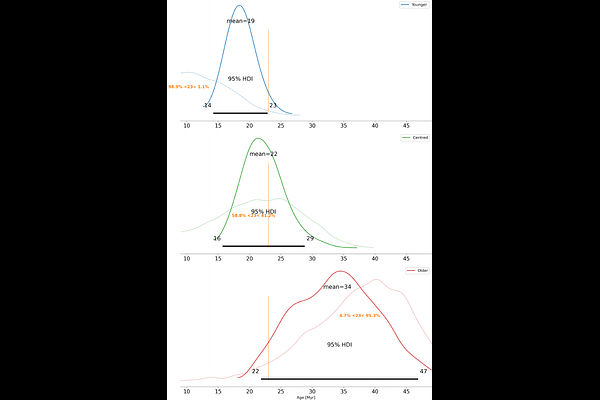Going Bayesian on the ages of nearby young stellar systems I. The expansion rate method

Going Bayesian on the ages of nearby young stellar systems I. The expansion rate method
J. Olivares, A. Berihuete, H. Bouy
AbstractContext. Determining the ages of young stellar systems is fundamental to test and validate current star-formation theories. Aims. We aim at developing a Bayesian version of the expansion rate method that incorporates the a priori knowledge on the stellar system's age and solves some of the caveats of the traditional frequentist approach. Methods. We upgrade an existing Bayesian hierarchical model with additional parameter hierarchies that include, amongst others, the system's age. For this later, we propose prior distributions inspired by literature works. Results. We validate our method on a set of extensive simulations mimicking the properties of real stellar systems. In stellar associations between 10 and 40 Myr and up to 150 pc the errors are <10%. In star forming regions up to 400 pc, the error can be as large as 80% at 3 Myr but it rapidly decreases with increasing age. Conclusions. The Bayesian expansion rate methodology that we present here offers several advantages over the traditional frequentist version. In particular, the Bayesian age estimator is more robust and credible than the commonly used the frequentist ones. This new Bayesian expansion rate method is made publicly available as a module of the free and open-source code Kalkayotl.